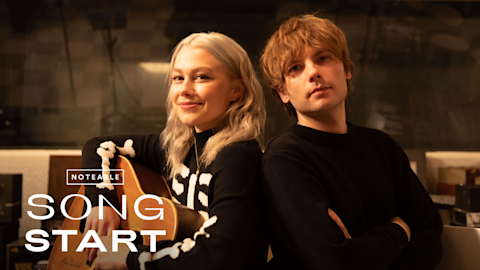Stories
The Do's and Don’ts of Music Merchandising

Manhead Merch executive Samantha Ray on visual identity and connecting with your fans.
Whether you’re a new artist just starting out, an established band touring the globe or a legacy act reaping the rewards of reissues and greatest-hits tours, your visual identity will always be a key part of your success. That means not only what you wear onstage, in videos, or in photographs but also the merchandise you offer your fans. Samantha Ray, an A&R executive at Manhead Merch, knows all the ups and downs of T-shirts, hoodies, and those other appealing tchotchkes—lighters, coffee mugs, etc.—you might see at a merch table.
After working at an estate management company where she helped handle the merchandise lines for The Doors, Janis Joplin, and Gram Parsons, Ray went into music merchandising directly and now works with artists such as Billy Idol, Eagles Of Death Metal, and Willie Nelson’s weed company, Willie’s Reserve—all of whom she brought into Manhead. (Manhead also handles merch for the likes of Weezer, Panic! At The Disco, and Fall Out Boy, among many other artists.)
We asked Ray for merch advice for bands of all levels. Here’s what she told us.
Do: Stay true to your identity, but give your fans what they want.
“You want your merch line to be authentic to who you are as a musician and your viewpoints on the world,” Ray says. “And more importantly, almost, what your fan base wants. I think a lot of artists try to make merchandise with clever sayings and things like that, but that’s only going to hit home with their biggest fans. You need to design for the wider fan base.”
Don't: Follow trends.
“I see a lot of younger bands trying to make their merch look like everybody else’s, or whatever the in-vogue style is out there,” Ray observes. “When you’re just following the trend, how will your line stand out from the rest? Of course you’re influenced by what you like, but you don’t have to copy those things exactly. You can take it as an inspiration and twist it.”
Don't: Get ahead of yourself.
Sure, just about everyone wants to offer their fans a ton of cool items, but having a huge merch line almost never makes sense for a band just starting out. Plus, it’s expensive. “A lot of small bands also try to move too quickly,” Ray says. “They see these pop-up shops and other things the big dogs are doing, but they’re not ready yet. You can go into debt really quickly if you get a little too creative too soon.”
Samantha Ray Photo by Leticia Llesmin
Do: Make a shirt with your tour dates printed on it.
“The best-selling design is always the tour tee,” Ray affirms. “You have to have a design with the tour dates on it. The dates don’t necessarily have to be on the back if that’s not your style—some people put them on the sleeve or front of the tee in really interesting ways. You can play around with it. But people want the tour dates. They want to prove they were there. Don’t we all want a Tom Petty shirt from 1978 to say we were there? I know I do.”
Don't: Cling to ideas that aren’t working.
You love that gold lamé tour Snuggie you came up with, but it’s not selling. Ditch it. “You should be open-minded beyond your perceived vision,” Ray says. “The customer is brutally honest. Things that you think are going to sell really well might actually not. You need to tap into your fan base and think outside yourself. At the same time, if you have a great idea, your fans will let you know.”
Do: Keep your line simple and concise.
There’s no need to have twenty different items at your merch table when you can have five or six that are cohesive and on point. “We usually recommend a tour tee, a unisex tee, a women’s tee, a sweatshirt or jacket, and one to two accessories, like a coffee mug or lighter,” Ray says. “You want to do your best to keep the line cohesive while having each item be pretty different so your fans will want to buy every single one of them. You don’t want them to have to choose between the T-shirt and baseball tee with the same design. You want them to be unique enough that they buy both.”
Don't: Be shy about wearing and promoting your own merch.
“I’ve worked with artists who don’t want to wear their merch onstage or promote it on social media, and it doesn’t sell as well,” Ray says. “A lot of our biggest artists always wear their merch onstage, even if it’s just for one or two songs. We’re working with Machine Gun Kelly now, and he cannot post about his merch enough—and he’s happy to because the pieces look amazing. So don’t be too cool. If you won’t wear your merch, why would your fans?”
Do: Hang out at the merch table.
Obviously this is untenable if you’re Lady Gaga or Chance the Rapper, but for artists on the rise, it’s important to meet your fans face-to-face. “You gotta go to the merch table,” Ray stresses. “Your fans wanna meet you, and they wanna show you they support you by buying your merch. You cannot go to the merch stand enough. Just shaking someone’s hand goes a long way. You’re making a fan for life.”
—J. Bennett
Spotify for Artists helps you to develop the fanbase you need to reach your goals.
video
How Julia Wolf Made It



